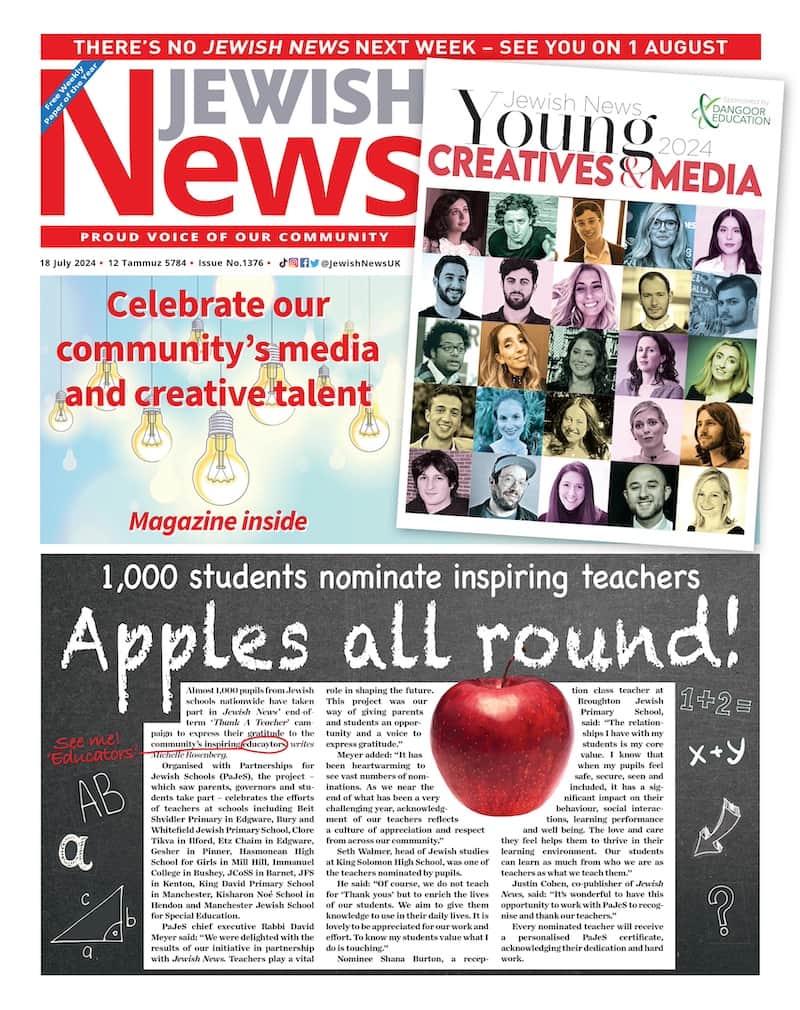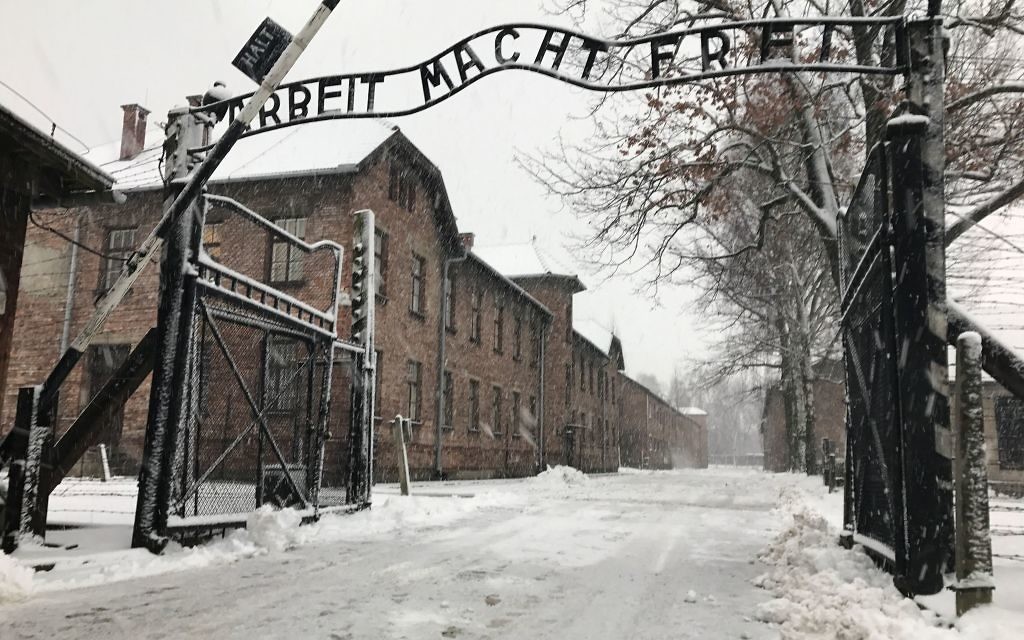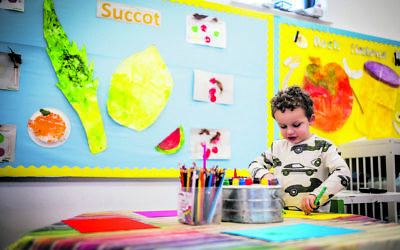Memoir tells story of survivor who was one of first Jews imprisoned at Auschwitz
Murray Scheinberg spent almost six years in Nazi prisons and concentration camps. Now his tale of survival is retold in powerful new book 'First One In, Last One Out'
Of the first eight Jews to be imprisoned at Auschwitz, Murray Scheinberg was the only survivor. Forcibly taken from his home in 1939, leaving behind a wife and two children, he spent almost six years in Nazi prisons and concentration camps.
He was initially registered as a Polish political prisoner because the eight who were sent to Auschwitz on the first mass transport from Tarnow in June 1940 were able to conceal their Jewish identities – for a period.
The truth could no longer be hidden from the Nazis when Scheinberg was forced to undress for a communal shower and he was beaten until his body was black, blue and bleeding.
Get The Jewish News Daily Edition by email and never miss our top stories Free Sign Up
Decades later, he bore witness at Nuremberg, a survivor of KL Auschwitz, Auschwitz II–Birkenau, Sachsenhausen, Oranienburg and Dachau.
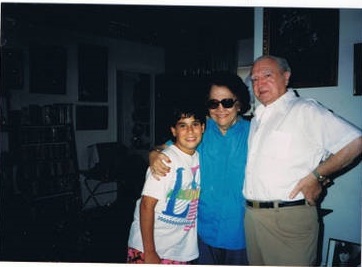
“He saw it all, and most of it is explained in my book,” says Scheinberg’s great-niece Marilyn Shimon, 66, retired educator based in the United States and the author of First One In, Last One Out, which details his harrowing tale of survival.
Growing up, Marilyn recalls sitting around the dining room table and listening to his testimony, watching him pull up his sleeve to reveal the number tattooed on his wrist: 31321.
“He would show us all the scars, all the wounds on his body, telling us what happened, and every single time we went there, it was verbatim. He just couldn’t forget it”, she says.
“How did my uncle survive? Where do you get the determination and the will to live through that?”
Key to Scheinberg’s escape from Dachau in April 1945 was a Nazi firearm left in an officer’s room and an air-raid alert during which all lights in the camp were turned off.
Using his stolen weapon, Scheinberg shot down several Nazi guards and made his escape dressed in one of their uniforms. He was joined by a fellow Jewish inmate, who died shortly after their escape and was buried just outside the grounds of Dachau.
Scheinberg then hid in a ditch, dug close to his friend’s grave, with help from a Nazi officer called Rudy, who was sympathetic to his plight and brought food to his hiding place.
Decades later, Scheinberg’s Nuremberg testimony would help to save Rudy’s life, Marilyn says.
“It was really quite unbelievable for this Nazi to be friends with a Jew, and for a Jew to be friends with a Nazi. At Nuremberg, my uncle actually saved Rudy. He testified on Rudy’s belief, and the lesson from that is to learn anything is possible.”
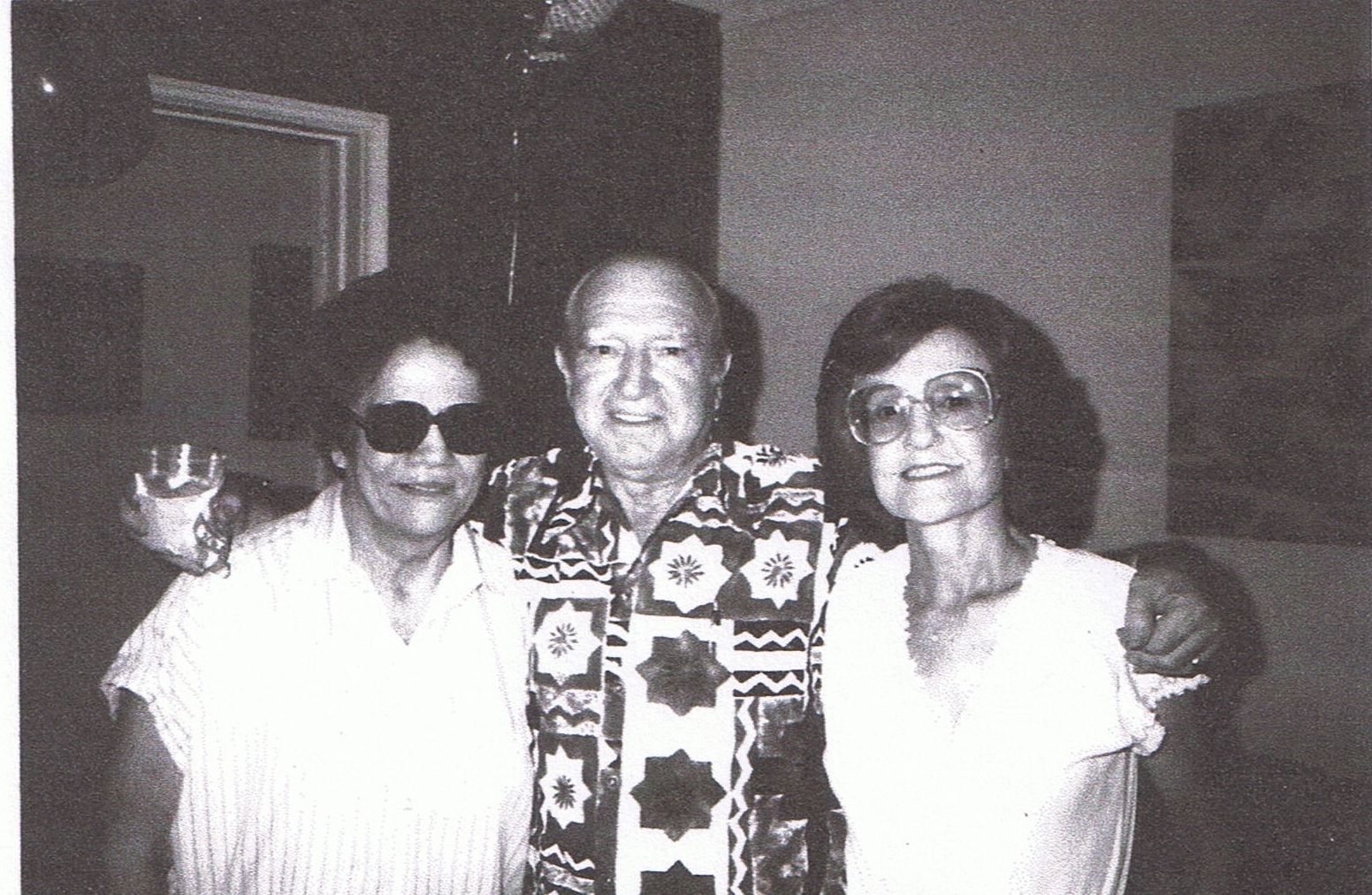
Scheinberg was finally discovered 12 days later by members of the US Seventh Army’s 45th Infantry. Surrounded by excretion and skeletal in his Nazi uniform, he was relieved to hear one of his liberators, an officer originally from New York, speak Yiddish.
After the war, Scheinberg emigrated to Los Angeles with a fellow survivor he met in a displaced persons’ camp in Epfenhausen in Germany.
After the couple divorced, he met American Jewish divorcee Rose Kodimer in 1963, and the two spent the rest of their lives together. He died in Los Angeles in 1996.
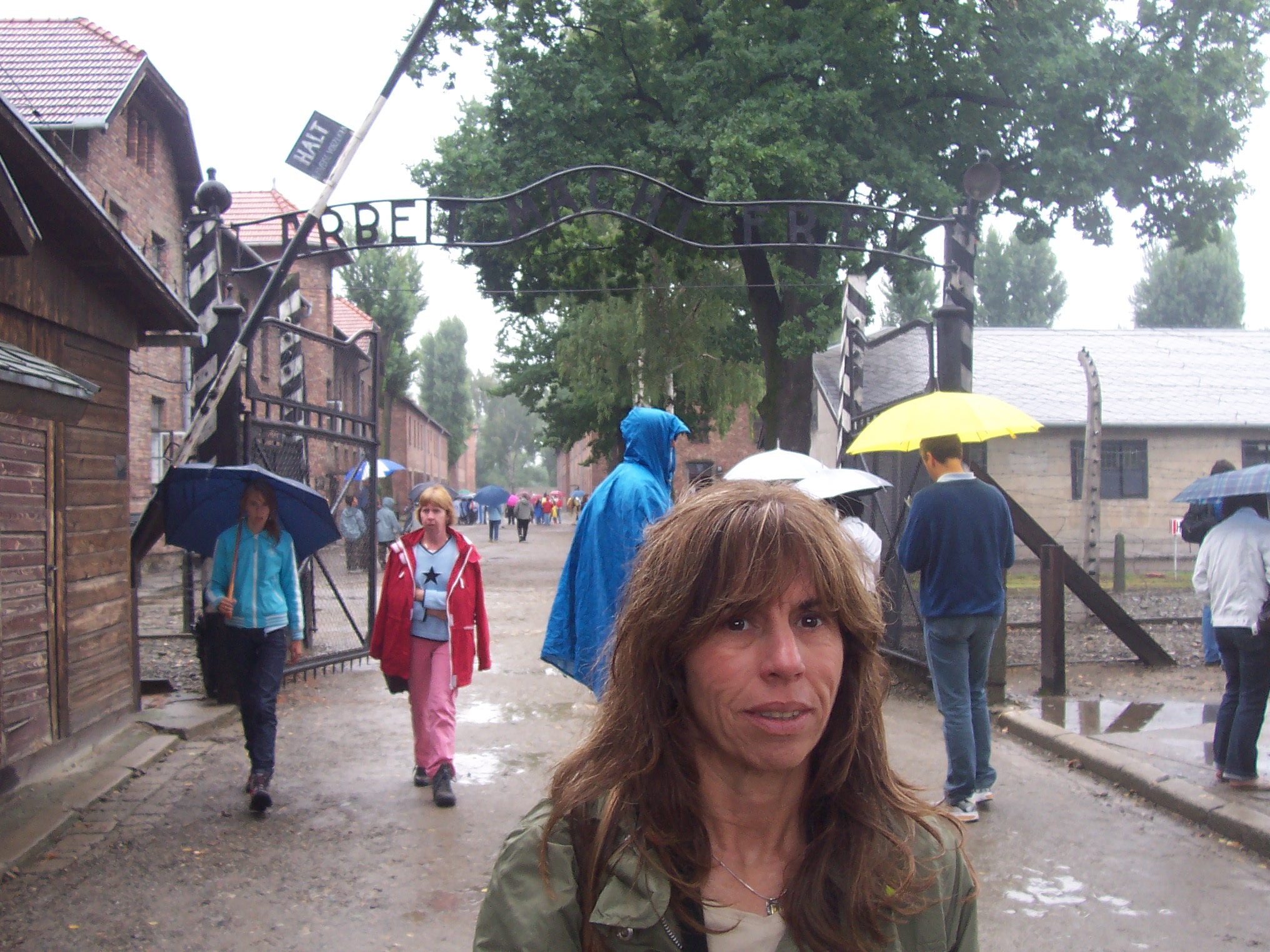
But the horror Scheinberg witnessed remained with him forever, and he continued to share his testimony in schools, libraries and to his family.
He would often recount one scene in particular, which haunted him forever: the murder of a mother and child at Auschwitz’s selection ramp.
“Whenever I think about it, I still cry,” his great niece says, her eyes glistening.
Scheinberg was assigned to Auschwitz’s Canada warehouse, where looted possessions were kept. This meant he was forced to bring in belongings from the selection ramp, where prisoners arrived in cattle carts, she explains.
“One of the Nazis had a gun aimed at the mother and screamed at her, ‘Tell your baby to walk,’ and obviously a six-month-old baby can’t walk,” Scheinberg’s great-niece recounts.
“He said, ‘Make the baby walk or I’m going to shoot the baby.’ She couldn’t, and the Nazi took the baby, threw him in the air and shot him, and then he shot the mother.”
Horrors like this meant the book “was difficult to write”, says Shimon.
“Quite honestly, I’d sit down maybe two, three days, eight hours a day and I had to take a break.”
Researching the book – translating material from German and poring over transcripts and recordings of Scheinberg’s various testimonies – took two years.
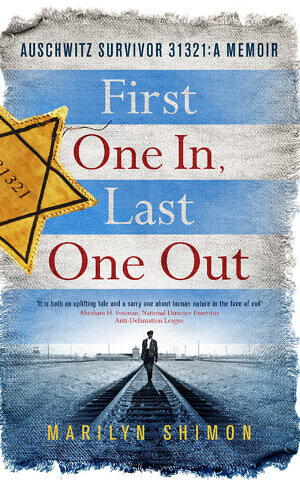
The writing process took another two. But it was worth the effort.
Growing levels of antisemitism in the United States are “a major threat”, she warns, making it all the more vital to preserve the legacy of survivors like her great uncle.
“We must educate the youth,” she urges. “They must know what happened because if they don’t, it will happen again.”
“And most important, not being a bystander.”
First One In, Last One Out by Marilyn Shimon is published by Mirror Books (RRP £8.99)

Thank you for helping to make Jewish News the leading source of news and opinion for the UK Jewish community. Today we're asking for your invaluable help to continue putting our community first in everything we do.
For as little as £5 a month you can help sustain the vital work we do in celebrating and standing up for Jewish life in Britain.
Jewish News holds our community together and keeps us connected. Like a synagogue, it’s where people turn to feel part of something bigger. It also proudly shows the rest of Britain the vibrancy and rich culture of modern Jewish life.
You can make a quick and easy one-off or monthly contribution of £5, £10, £20 or any other sum you’re comfortable with.
100% of your donation will help us continue celebrating our community, in all its dynamic diversity...
Engaging
Being a community platform means so much more than producing a newspaper and website. One of our proudest roles is media partnering with our invaluable charities to amplify the outstanding work they do to help us all.
Celebrating
There’s no shortage of oys in the world but Jewish News takes every opportunity to celebrate the joys too, through projects like Night of Heroes, 40 Under 40 and other compelling countdowns that make the community kvell with pride.
Pioneering
In the first collaboration between media outlets from different faiths, Jewish News worked with British Muslim TV and Church Times to produce a list of young activists leading the way on interfaith understanding.
Campaigning
Royal Mail issued a stamp honouring Holocaust hero Sir Nicholas Winton after a Jewish News campaign attracted more than 100,000 backers. Jewish Newsalso produces special editions of the paper highlighting pressing issues including mental health and Holocaust remembrance.
Easy access
In an age when news is readily accessible, Jewish News provides high-quality content free online and offline, removing any financial barriers to connecting people.
Voice of our community to wider society
The Jewish News team regularly appears on TV, radio and on the pages of the national press to comment on stories about the Jewish community. Easy access to the paper on the streets of London also means Jewish News provides an invaluable window into the community for the country at large.
We hope you agree all this is worth preserving.
-
By Brigit Grant
-
By Laurent Vaughan - Senior Associate (Bishop & Sewell Solicitors)
-
By Laurent Vaughan - Senior Associate (Bishop & Sewell Solicitors)
-
By Laurent Vaughan - Senior Associate (Bishop & Sewell Solicitors)
-
By Laurent Vaughan - Senior Associate (Bishop & Sewell Solicitors)

